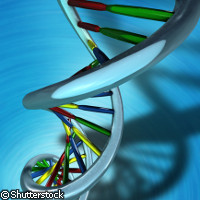Picky cells may lead the way to more precise meds
EU-funded researchers have used advanced screening tests to identify over 4,000 genes that are involved in endocytosis, the process that cells use to take in substances from the external environment. The findings, published in the journal Nature, could lead to the development of treatments and diagnostic tests for a range of diseases. EU support for the study came from the ENDOTRACK ('Tracking the endocytic routes of polypeptide growth factor receptor complexes and their modulatory role on signalling') project, which received EUR 11 million under the 'Life sciences, genomics and biotechnology for health' Thematic area of the Sixth Framework Programme (FP6). Cells do not have mouths, but they do need to take in substances from the outside. They do this through endocytosis, whereby the cells pinch off tiny vesicles from the cell membrane. These vesicles, called endosomes, then transport the substance ingested to the appropriate part of the cell. Endocytosis is involved in many vital processes, including nutrient uptake, intracellular signalling, development and immune defence (immune cells 'swallow' and break down pathogens in endosomes). Disruptions to the process of endocytosis have been linked to a range of disorders, including infectious diseases, cardiovascular diseases, cancer, Huntington's, Alzheimer's and diabetes. Unfortunately, scientists' understanding of the endocytic machinery remains poor. For example, we do not know how signalling molecules get to the correct destination inside the cell and pass on their information. The way endocytosis is integrated into the overall cellular system also remains unknown. In this study, scientists in Germany and Russia drew on a range of advanced technologies to test the role of every single human gene to determine its role (if any) in endocytosis. 'We developed a brand new strategy that combines numerous components into one big analysis system: a genomic RNAi [ribonucleic acid interference] screen, automated, high-resolution microscopy, multi-parametric image analysis - and computing power,' explained Dr Marino Zerial, Director of the Max Planck Institute of Molecular Cell Biology and Genetics. First, they blocked the activity of all 24,000 human genes one by one. The team then used fluorescent dyes to mark two proteins which the cells under investigation ingested via endocytosis. The fluorescent dye made the resulting endosomes visible to high-resolution microscopy and image analysis software. The experiments resulted in a bank of over 2.5 million images, and each one had to be analysed against a set of 62 parameters covering different aspects of endocytosis. To do this, the team used a supercomputer run by the Center for Information Services and High Performance Computing (ZIH) and the Technical University of Dresden in Germany. The study identified over 4,000 genes that are either directly or indirectly involved in endocytosis. Important discoveries include the fact that blocking certain genes causes endosomes to come to a halt near the edge of the cell, instead of being transported to the cell's centre. In addition, different substances such as nutrients and growth factors appear to be guided to their respective destinations by different sets of genes. 'Our findings demonstrate that cells don't simply go out and ingest just any substances, handling them in the same manner,' commented Dr Zerial. 'On the contrary, they have a very precise definition of what they need when and in what quantity, and also where it needs to get to in the cell.' Furthermore, many of the genes picked up by this study are also known to be involved in certain human diseases. This confirms the role of endocytosis in these conditions and also provides new targets for drug development. The next step for the team is to test the screening system on cells that simulate various human diseases and conditions. This will reveal the system's potential for drug discovery and development. Ivan Baines, Director of Services and Facilities at the Max Planck Institute of Molecular Cell Biology and Genetics, explained: 'If we can distinguish drug toxicity as a separate activity from drug efficacy, as is suggested by the quantitative profiling approach of this study, then we may be able to discover better drugs with fewer side effects.'
Countries
Germany, Russia



